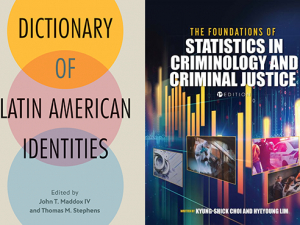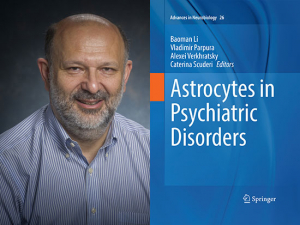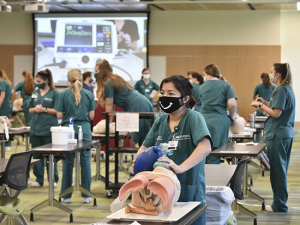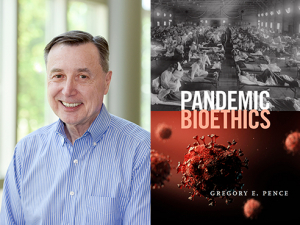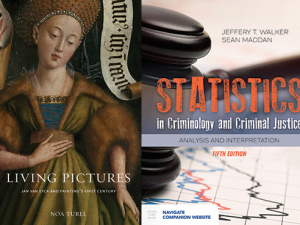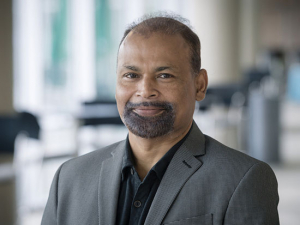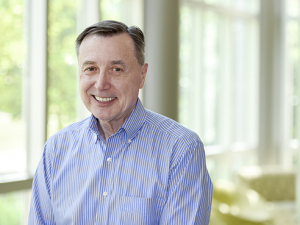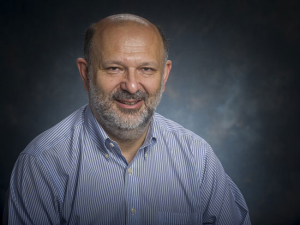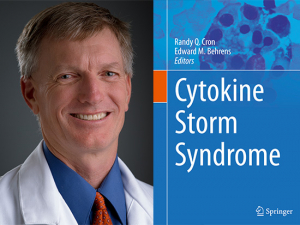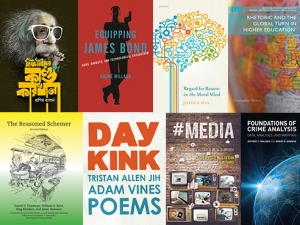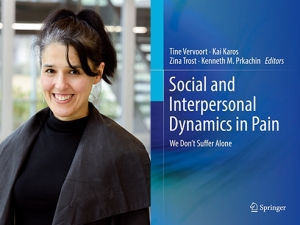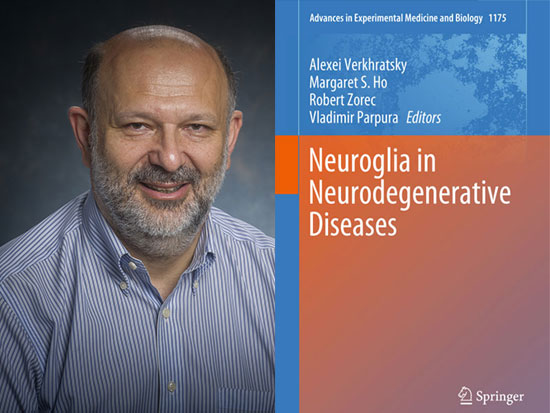 Half your brain is made up of cells you probably didn’t even know were there.
Half your brain is made up of cells you probably didn’t even know were there.
What are they up to? That is a question that has consumed Vladimir Parpura, M.D., Ph.D., for much of his career.
Alongside the 100 billion or so neurons in a human brain are a roughly equal number of neuroglia — a catch-all term referring to all non-neuronal cells other than the cells that make up blood vessels. Although they are often described as “supportive cells” (“glia” is the Greek word for “glue”), this implies a passivity that is getting ever farther from the truth, said Parpura, professor of neurobiology and president of the American Society for Neurochemistry. (Related story: Parpura named to leadership position with International Society for Neurochemistry.)
Instead of supportive cells, “a better definition is that glia are homeostatic and defensive cells of the nervous system,” Parpura said. Glial cells are in the brain, spinal cord and peripheral ganglia, he says. “There are glial cells at the insertion of nerves into muscle and surrounding the axons of neurons. They are also in the enteric nervous system, the source of our ‘gut feelings.’”
In a new book, Neuroglia in Neurodegenerative Diseases, Parpura and co-editors Alexei Verkhratsky, Ph.D., Margaret Ho, Ph.D., and Robert Zorec, Ph.D., explain the way neuroglia play a fundamental role “in most, if not all, neuropathologies,” Parpura said. This is the first text of its kind, he noted: “We feel there is a need to educate graduate students, health professionals and physicians in general.”
Having a conversation
For a long time, “glia were on the back burner,” Parpura said. He helped to change that starting in the early 1990s, when “I discovered that glial astrocytes can release glutamate, which is a major neurotransmitter, similar to neurons using a calcium-dependent vesicular mechanism,” Parpura said. In effect, glia and neurons are having a two-way conversation. This result was a landmark paper in Nature in 1994, Glutamate-mediated astrocyte-neuron signalling. “At the time it was heresy,” Parpura said, but the discovery has earned considerable acclaim, including his selection as a prestigious 2017 Fellow of the American Association for the Advancement of Science. And, he said with a laugh, “there are still people who need to get converted.”
| For a long time, “glia were on the back burner.” But “in the last decade there has been a lot of supportive evidence from experiments that glia are important in Alzheimer’s, Parkinson’s and many other diseases,” including major depressive disorder, schizophrenia, epilepsy and addictive disorders. |
Subsequent research by Parpura has contributed to the realization that the glia play a crucial role in gut motility. Other have shown that glial cells play a role in sleep, learning and memory, and can synthesize a great deal of the glutamate in the brain, protect it against reactive oxygen species and other dangers and regulate the formation and function of the blood-brain barrier, among many other roles.
Delving deeper
This ubiquity suggests that disruptions in glial cells will have a significant effect on overall brain function. Aged microglia, even in apparently healthy people, tend to upregulate pro-inflammatory genes and antigen-presenting markers and downregulate anti-inflammatory cytokines and microglial activation inhibitory factors. “We covered this in broad brushstrokes” in a previous book, Pathological Potential of Neuroglia, Parpura said. But “in the last decade there has been a lot of supportive evidence from experiments that glia are important in Alzheimer’s, Parkinson’s and many other diseases,” including major depressive disorder, schizophrenia, epilepsy and addictive disorders.
Possible therapies
The book concludes with a chapter on induced pluripotent stem cell-derived astroglia as a new tool for research toward the treatment of Alzheimer’s disease.
“This is the first stab at it,” Parpura said. “I’m sure the field is going to progress quite a bit. One thing to think about is how neuroglia play a role in neurodevelopmental diseases and, by extension, psychiatric diseases. I think the field is going to boom there.”
Meanwhile, his lab continues to explore. “We have explored the role of glial cells in Pitt Hopkins syndrome, an autism spectrum disorder that affects resorption in the gut,” Parpura said. He also explored the role of glial protein connexin 43, a protein essential for intercellular communication, in the gut. This protein gets mutated in oculodentodigital dysplasia. “If you shut down the connexin 43 mechanism, it affects motility,” Parpura said. “That’s where you have the possibility for therapeutic intervention.”



